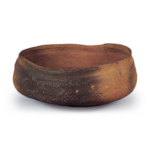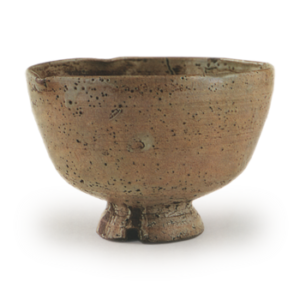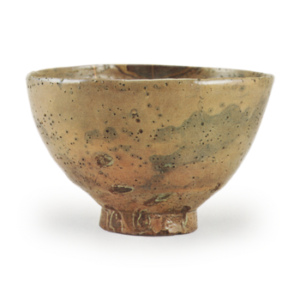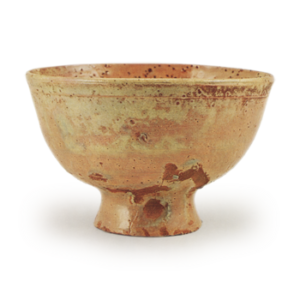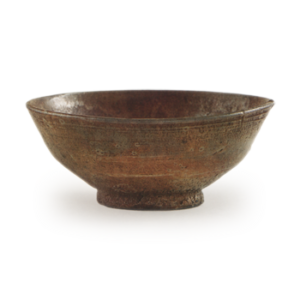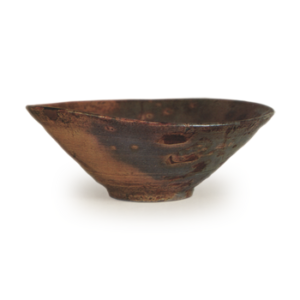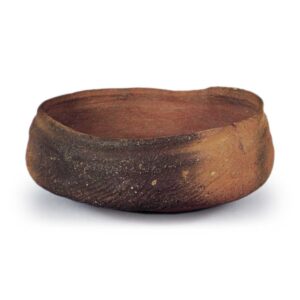
Height 8.3cm, Bore 17.9cm x 19.0cm, Round bottom
Yugi Art Museum
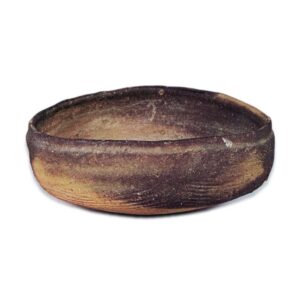
Height 9.3cm, Bore 18.1cm x 21.8cm, Round bottom
Yugi Art Museum
A considerable number of unglazed ash vessels, said to be Chojiro ware, have been handed down through the ages.
Although there are no materials that clearly indicate that they were made by Chojiro, many of them are marked “Chojiro” on the box with an inscription. The shape of this unglazed earthenware is similar to that of the lid of a nanban jar, and it is likely that it was made as an ash ware based on the lid of a nanban jar. The design is similar, and most of them are decorated with a beaten pattern on the outside.
The bottom is round. Figure 99 was once owned by Lord Matsudaira Fumai, and is inscribed on the front of the lid of the inner box as “Chojiro, Autumn Ash Box. Figure 100 is an ash ware also said to have been made by Chojiro. “Mukashi Houjiku Kakusai (Hanasho)” is written by Kakusai Haraso on the back of the inner box lid. Both are outstanding works among ash vessels.
Dönyũ: charcoal-ash vessel
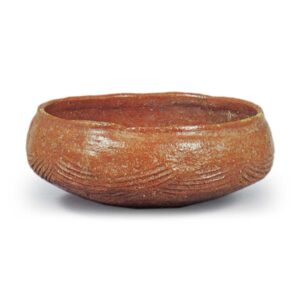
Height 8.6 cm, mouth diameter 19.4 cm, round bottom
This ash bowl was made by NONKOU and has “NONKOU, ash hojiroku left (hanashii)” written by Jyoshinsai on the back of the inner box lid. The entire surface is covered with a thin layer of noren and marked below the waist with the seal of NONKOU’s regular use. This is one of the better ash vessels made by NONKOU. Akaraku ashwares covered with sen (a kind of “kettle”) began to be fired during the Nongkou period. The comb pattern around the waist is also decorative, showing a different style from the rustic style of the Chojiro period.

